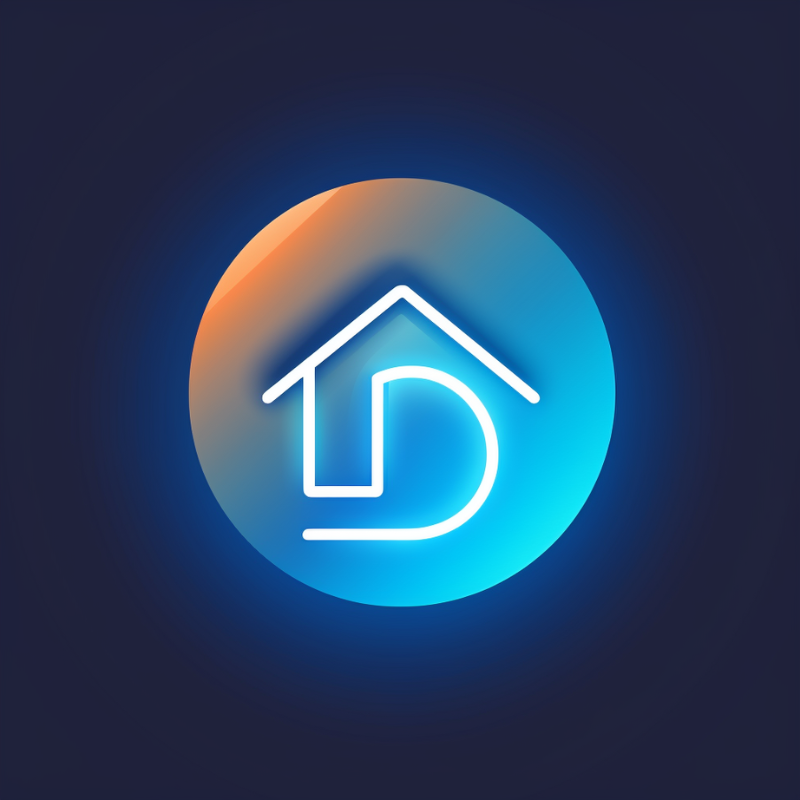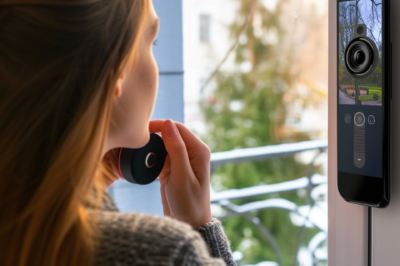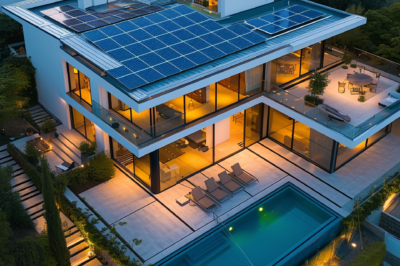
Why Install Solar Power?
-
Solar power paired with smart home technology can significantly reduce energy bills and increase efficiency.
-
Key components of a solar-powered smart home include solar panels, inverters, smart meters, and energy management systems.
-
Smart devices like thermostats and appliances optimize energy use by automating savings and providing detailed energy consumption data.
-
Financial incentives like tax credits and rebates make solar power systems more affordable for homeowners.
-
Solar installations can increase property value and contribute to a sustainable future by reducing carbon footprints.
Why Solar Power and Smart Homes Are a Perfect Pair
Solar power and smart homes go hand-in-hand because they both aim to maximize energy efficiency. A smart home can use the energy generated by solar panels to power your appliances, lights, and even charge your electric car. And with the help of smart management systems, you can ensure that not a drop of this clean energy goes to waste.
Addressing Rising Energy Costs with Solar
Electricity bills can be a huge burden, and they’re only getting bigger. Solar power offers a way out. By harnessing the sun’s energy, you can produce your own power and reduce your dependence on the grid. This means more predictable energy costs that aren’t subject to the whims of the market.
Besides that, solar power is a renewable resource, which means it’s available every day without the risk of running out. Unlike fossil fuels, the sun isn’t going to send you a bill. So once you’ve covered the initial setup costs, the energy savings start stacking up.
Smart Home Solar Power 101
How Does Solar Power Work in a Smart Home?
The process is straightforward. Solar panels on your roof capture sunlight and convert it into electricity. This electricity can be used in real-time or stored in batteries for later use. A smart home system takes this setup to the next level by optimizing when and how this power is used throughout your home.
For example, on sunny days when your panels produce more power than you need, your smart system can automatically divert excess energy to charge your home battery or sell it back to the grid. It’s like having a mini power station right at home.
Key Components of a Smart Solar System
-
Solar Panels: The most visible part of the system, these panels collect sunlight and convert it into electricity.
-
Inverters: They turn the direct current (DC) from your panels into the alternating current (AC) that your home appliances use.
-
Smart Meters: These track how much power you’re using and generating, giving you the insights needed to optimize your energy usage.
-
Energy Management System: This is the brain of your smart solar home, coordinating all the components to ensure they work together efficiently.
Let’s see how these components come together to create a seamless energy-saving ecosystem in your home.
Installation and Integration
Getting your smart home to harness solar power starts with the right setup. Like setting up a new gadget; you want to ensure everything is in place for it to run smoothly. The installation of solar panels and integrating them with your smart home system is a critical step that sets the foundation for all the benefits of a Smart home combined with solar.
Choosing the Right Solar Panels for Your Home
The solar panels you choose are important and the quality and warranty on offer is critical. Once the panels are installed you want to know they are robust and durable. Buying and arranging installation from a reputable company gives you peace of mind, knowing they will still be there if issues do arise.
Solar panels are the engines for your home’s energy production. You’ll want to consider factors like efficiency, durability, and reputation. High-efficiency panels might cost more upfront, but they’ll generate more power and savings in the long run.
You’ll also want to think about the size of your roof and how much sunlight it gets. This will determine how many panels you can install and how much power you’ll be able to generate. Too many and you’re wasting energy and too few you’re not getting the power you require to run your home.
Remember, more panels can be added later if your energy requirements increase.

Connecting Solar Power to Smart Home Systems
Now that you’ve chosen your solar panels, it’s time to make them part of your smart home.
This involves connecting your solar setup to a smart energy management system. Your Smart home knows exactly when to store energy, when to use it, and even when to sell it back to the grid. Smart home technology works with you, to streamline your life and save energy.
The integration of solar with Smart technology allows for real-time monitoring and control of your energy consumption. You can see which devices are using the most power and adjust accordingly, saving money and having your home work efficently.
Economic Incentives and Savings
Going solar isn’t just good for the planet; it’s also good for your pocket. There are a number of financial incentives available that can help offset the initial cost of solar panel installation.
Understanding Tax Credits and Rebates
Governments often offer tax credits and rebates to encourage homeowners to invest in solar energy. These incentives can cover a significant portion of your installation costs. It’s a reward from the Government for helping to reduce the strain on the power grid and the environment.
For instance, in the United States, the federal solar tax credit, also known as the investment tax credit (ITC), allows you to deduct a percentage of the cost of installing a solar energy system from your federal taxes. It’s a substantial saving that you don’t want to miss out on.
Reducing Monthly Bills with Smart Solar Solutions
One of the most immediate benefits of solar power is the reduction in your monthly energy bills. By producing your own power, you use less from the grid, and that means lower costs. Over time, these savings can add up to cover the cost of your solar panel system.
And with smart technology, you can take this a step further. Smart devices can automatically adjust your energy usage based on the most efficient times to use solar power. This leads to even more savings, putting your Smart home on autopilot for your energy bill savings.
Enhancing Home Value
Installing solar panels is an investment in your home’s future value. As more people become environmentally conscious, and energy costs rise, homes with solar installations become more attractive on the market.
Solar Power as a Property Upgrade
Think of solar panels as a high-tech upgrade for your home, similar to renovating your kitchen or adding a new bathroom. It’s a feature that can make your property stand out and potentially increase its resale value. Unlike other upgrades, solar panels also pay you back with energy savings.
Market Trends: The Appeal of Eco-friendly Homes
There’s a growing trend in the real estate market toward eco-friendly homes. Buyers are looking for properties that are not only beautiful but also sustainable. Homes with solar power systems are often seen as modern, forward-thinking, and responsible — all attractive qualities in today’s market.
This means that when you decide to sell, your solar-powered smart home could have a competitive edge. It’s an investment that can pay off in more ways than one.
Ensuring Energy Independence
-
Reduced reliance on the grid during peak hours or outages.
-
Increased self-sufficiency with solar battery storage options.
-
Peace of mind knowing your home can operate independently.
Energy independence is about taking control of your power supply. With a solar-powered smart home, you’re less dependent on the utility company. You’re also not at the mercy of power outages or fluctuating energy prices.
And when you have a battery storage system in place, you can store excess energy for use at night or during an outage. You have a backup generator that’s always ready to go.
Energy independence isn’t just about saving money or being green; it’s also about security and reliability. It’s knowing that your home has the power it needs, whenever it needs it.

Freedom from the Grid: The Impact of Home Batteries
Home batteries have evolved and are the backbone of solar power. They store the energy you generate during the day so that you can use it when the sun isn’t shining. This means you can keep your lights on at night, power your appliances, and even charge your electric car, all on solar power.
Battery storage of excess energy is like storing leftovers from a big meal. You’ve cooked a great meal, and instead of letting that food go to waste, you store it in the fridge for a midnight snack.
Self-sufficiency in Times of Outage
When the grid goes down, a solar-powered smart home with battery storage can keep running. This self-sufficiency is invaluable, especially in areas prone to power outages due to extreme weather or other disruptions.
Having solar backup keeps the lights on and your family comfortable, no matter what’s happening outside.
Customizing Your Solar Power Plan
No two homes are exactly alike, and that’s why your solar power system should be tailored to meet your specific energy needs. It’s like getting a suit custom-made; it fits better and looks sharper because it’s designed just for you.
Tailoring Systems to Fit Your Energy Needs
Just as you might choose a streaming service based on your favorite shows, your solar power system should be customized to fit your energy consumption patterns. This ensures you’re not overpaying for a system that’s too large or underutilizing a system that’s too small. It’s about finding the sweet spot where your energy production meets your daily energy use.
To do this, you’ll need to evaluate how much energy you use throughout the year and when you use it most. Then, you can work with a solar professional to design a system that matches this usage. They’ll help you determine the number of panels you need and the best type of battery storage to keep your home running smoothly.
Monitoring and Managing Solar Usage
Once your solar power system is up and running, it’s not a ‘set it and forget it’ situation. You’ll want to keep an eye on how much energy you’re producing and using. This is where smart home technology really shines. With the right apps and devices, you can monitor your solar energy usage in real time, right from your smartphone.
These insights can help you make small adjustments that lead to big savings. For example, you might notice that you’re producing more energy in the afternoon when no one is home. You can use this information to schedule energy-intensive tasks, like laundry or charging your electric car, for those peak production times.
The Green Impact
Reducing Your Carbon Footprint with Solar
When you choose solar power, you’re making a commitment to reduce your carbon footprint. Every kilowatt-hour (kWh) of solar energy you use is a kWh of fossil fuel energy you’re not using. This means fewer greenhouse gas emissions and a cleaner environment.
And it’s not just about the big picture. Solar power can have a positive impact on your local community by reducing the demand on the grid and the need for additional power plants. It’s a win-win for you and the world around you.
Eco-Conscious Living for a Sustainable Future
Embracing solar power is a step toward a more sustainable lifestyle. It’s about making choices that ensure a healthier planet for future generations. By powering your smart home with solar energy, you’re leading by example and showing that living green can be both practical and rewarding.
Imagine a future where every home is powered by clean, renewable energy. It starts with individual actions like yours. By choosing solar, you’re part of a growing movement that’s paving the way for a brighter, more sustainable future.
FAQ
What Are the First Steps to Take in Adopting Solar Power for My Smart Home?
If you’re ready to take the plunge into solar power, start by researching and understanding your energy needs. Look at your electricity bills to see how much energy you use and consider how a solar system can fit into your home. Next, consult with a reputable solar provider to get an assessment and quote. They’ll help you understand the potential costs and savings, as well as the best setup for your home.
Can I Store Excess Solar Energy for Later Use?
Absolutely! With a solar battery storage system, you can store the energy your solar panels produce during the day and use it at night or during an outage. It’s like having a savings account for your energy, ensuring you have a backup when you need it most.
Will Solar Panels Work During Cloudy or Rainy Days?
Solar panels do need sunlight to generate power, but they can still produce energy on cloudy or rainy days, just at a reduced rate. Modern solar panels are quite efficient and can work in various weather conditions. Plus, if you have a battery storage system, you can use the energy saved from sunnier days.
How Long Do Solar Panels Typically Last?
Solar panels are built to last and typically come with a warranty of 25 to 30 years. However, they don’t just stop working after that time. They may produce less energy, but with proper maintenance, your solar panels can continue to provide value for many years beyond their warranty.
What Is the Average Cost to Solar-Power a Smart Home?
The cost of solar-powering a smart home varies based on factors like the size of your home, your energy needs, and the type of solar panels you choose. On average, you might expect to spend anywhere from $15,000 to $25,000 before incentives. Remember, though, this is an investment that pays for itself over time through energy savings and potential increases in property value.



